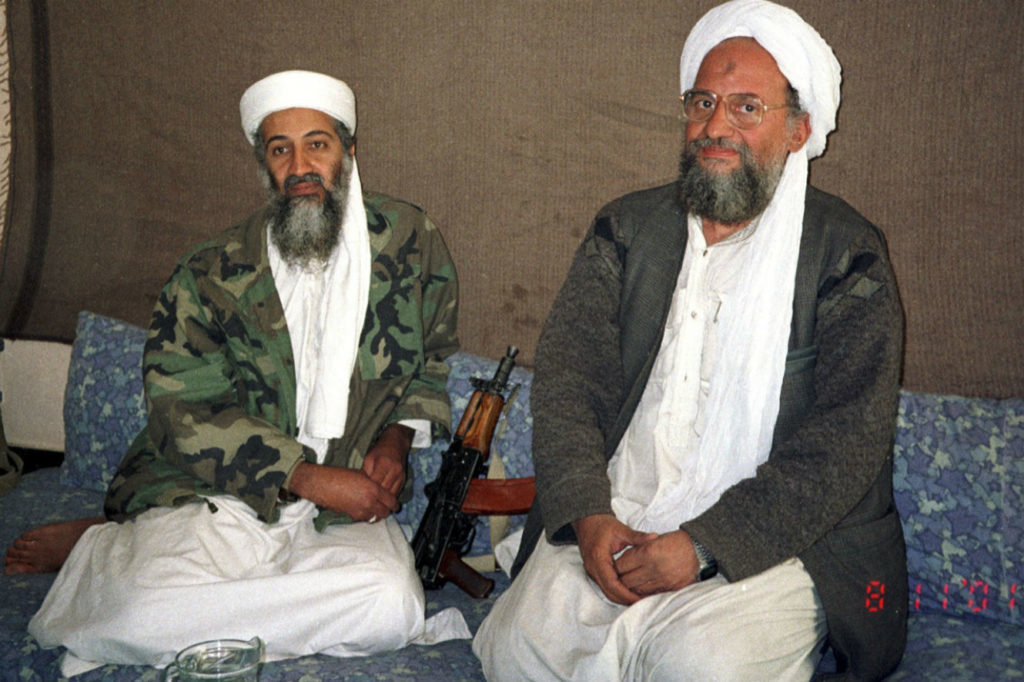Isis in declino, Al Qaeda in crescita…
In the past five years, only one attack in a Western country — the Kouachi brothers’ attack against Charlie Hebdo in January 2015 — can be connected to al-Qaeda. Why did the once infamous and feared group halt its terror campaign in the West? Part of the explanation is that al-Qaeda has indeed suffered from targeted killings of senior operatives, making it harder for the group to plan and execute international attacks, and that regional events in the Middle East have enhanced the attractiveness of a local focus as opposed to conducting attacks in the West. Equally important to understand al-Qaeda’s changing priorities, however, is the rise of the Islamic State as a competing jihadi outfit and its ensuing terror campaign in the West. Intra-jihadi dynamics affect rival jihadi groups’ priorities for attacks. I outlined this argument in a recent article, Jihadi Competition and Political Preferences, which contends that intra-jihadi competition has played an important role in the changing enemy hierarchies of al-Qaeda and the Islamic State since 2014. Now, with the decline of the Islamic State, will al-Qaeda once again focus on launching attacks in (and not just against) the West?
Before 2014, al-Qaeda was considered the primary jihadi threat against the United States and its Western allies, based on its history of organizing and supporting terrorist attacks in the West and its continuous rhetorical emphasis on these countries as its number one enemy (e.g. al-Qaeda leader al-Zawahiri’s most recent speech “America Is the First Enemy of the Muslims”). But in 2013, the Islamic State emerged in Syria and eventually began to challenge al-Qaeda. The period between 2014 and 2016 saw a record number of jihadi plots in Europe, and in the West more broadly, but these were controlled, guided, or at least claimed almost exclusively by the Islamic State and not al-Qaeda. This came as something as a surprise because before 2014, the Islamic State’s predecessor organizations (al-Qaeda in Iraq, Islamic State in Iraq, and ISIS/ISIL) were known to have a national, or to some extent regional, geographical focus, prioritizing the local Shiite enemy over the more diffuse “far enemy.” In their speeches, the groups’ leaders usually identified the Iraqi government or local Shiite groups as the main enemy, and actions were directed against these actors. For instance, as Cole Bunzel has explained, in a 2007 speech the group’s former leader, Abu Umar al-Baghdadi, argued, “The rulers of Muslim lands are traitors, un-believers, sinners, liars, deceivers, and criminals,” while the following year he said similarly that “fighting them is of greater necessity than fighting the occupying crusader.”
The rupture between the Islamic State and al-Qaeda in February 2014, when al-Qaeda announced that the Islamic State in Iraq and Sham was no longer part of the al-Qaeda movement, and the resulting competitive relationship altered both groups’ priorities. The Islamic State enhanced its operational and discursive focus on the far enemy, whereas al-Qaeda increasingly focused closer to home.

The number of attacks each group has executed since 2010 clearly illustrates this change. Although al-Qaeda’s capability and willingness to launch attacks in the West have probably always been severely misconstrued and overrated, the shift that began in 2014 nonetheless highlights the changing dynamics. The idea that the Islamic State increased its targeting of the West after its rupture with al-Qaeda is further supported by leader statements. My research shows that since February 2014, Islamic State leaders regularly started to call for attacks against the West (12 times) in their public speeches, compared to only once between 2010 and 2014. Meanwhile, calls for such attacks featured consistently in the discourse of al-Qaeda leaders.
A few statements are particularly illustrative of the shift in the Islamic State’s rhetoric. In May 2012, long before the official split between al-Qaeda and its Iraqi affiliate, Abu Muhammad al-Adnani, the group’s late spokesperson, explained that “Your first enemy is the [Shi’ites], and after them the Jews and the Crusaders.” Less than two years later, in March 2014, the same al-Adnani asked rhetorically:
Who is it today that are the bitter enemies of America? […] Who is it that enrages them? Who is it that threatens their security? […] there is no doubt that they are the mujahideen, but I ask you by Allah, O seeker of Jihad, is the Islamic State not on the top of this list?
Four months later, but still one month prior to the first airstrikes by the international coalition against the Islamic State, its leader Abu Bakr al-Baghdadi called for attacks against Western crusaders. Finally, in September 2014, al-Adnani pronounced his now infamous order: “Kill a disbelieving American or European — especially the spiteful and filthy French — or an Australian, or a Canadian, or any other disbeliever from the disbelievers waging war, including the citizens of the countries that entered into a coalition against the Islamic State.”
| Al-Qaeda leaders Usama bin Laden and Ayman al-Zawahiri | ||
| “Near enemy” | “Far enemy” | |
| 2010–January 2014 (19 speeches/statements) | 8 times | 10 times |
| February 2014–December 2017 (36 speeches/statements) | 12 times | 12 times |
| Islamic State leaders Abu Umar al-Baghdadi and Abu Bakr al-Baghdadi and spokespersons Abu Muhammad al-Adnani and Hassan al-Muhajir | ||
| 2010–January 2014 (12 speeches/statements) | 9 times | 1 time |
| February 2014–December 2017 (22 speeches/statements) | 15 times | 12 times |
The typical explanation from Islamic State in the wake of an attack in the West is, “We attack you because you attack us.” This argument, based in the Islamic jurisprudential principle of qisas (retribution), suggests that such attacks are retaliation for the international anti-Islamic State coalition’s bombings in Syria and Iraq. Another argued reason, along the lines of Abu Bakr Naji’s Management of Savagery theory, is the desire to deter the far enemy. But a closer look suggests that other factors have also affected the group’s expansion of its enemy hierarchy, including power ambitions and competition.
So, how does this explain al-Qaeda’s behavior? The answer lies in understanding the importance of intra-jihadi competitive dynamics. Al-Qaeda has been positioning itself as the less extreme, and thus more tolerable jihadist group. For example, as noted by Elizabeth Kendall, al-Qaeda in the Arabian Peninsula’s (AQAP) image benefitted from the emergence of a more brutal jihadi outfit in Yemen as it suddenly appeared more digestible in the eyes of the local population than the Islamic State — while perhaps being a lesser priority for the regime — and international opponents. Similar dynamics have been evident in Afghanistan after the January 2015 emergence of the Islamic State’s Khorasan Province. This reasoning can be extended more generally to suggest that al-Qaeda in some ways benefitted from the emergence of the Islamic State, which made certain behavior more or less attractive to pursue. For al-Qaeda, it was important not to be conflated with its former affiliate and its image of brutality and sedition. The presence of an even more extreme group thus enabled al-Qaeda to position itself as more “moderate” and to win the sympathy of the Muslim public in the areas where it was engaged.
As the Islamic State launched its crusade against the West in the form of a string of terror attacks, al-Qaeda’s incentive to continue its tradition of striking the West was critically diminished. Al-Qaeda never orchestrated or inspired anywhere near the frequency of attacks in the West that the Islamic State has been capable of. Yet the extremely low frequency in the past five years (one successful attack) seems most of all to be the result of a conscious strategy in reaction to a strategic environment critically affected by the emergence and behavior of the Islamic State. It is important to note that al-Qaeda’s ability and desire to carry out international attacks were affected by events prior to the rise of the Islamic State. Between December 2007 and December 2009, the group suffered from the loss of four consecutive heads of external operations, leaving a vacuum in terms of operative experience. In the same period, al-Qaeda’s senior leaders laid out a strategy to win the sympathy of the general Muslim masses. The group feared, one could speculate, that international terror attacks would be counterproductive to achieve such public support. Still, this only tells half the story. Al-Qaeda continued to define the West as its primary enemy and — although often forgotten — the group has only grown in strength in the past few years, winning lots of local and global support indicating sufficient capability to guide or even orchestrate an attack if desired.
Since 2014 when the Islamic State surpassed al-Qaeda in popularity and sheer numbers and eventually declared its caliphate, it appears to have harbored an ambition to make its competitor obsolete by doing what it does, but better. For al-Qaeda, it was the other way around. With the current decline of the Islamic State, and the concurrent increase in support for al-Qaeda, the question becomes: what will al-Qaeda do now?
Perhaps al-Qaeda leader Ayman al-Zawahiri’s most recent speech from March 20 offers some indications to answer this question. The speech, titled “America is the First Enemy of the Muslims,” reiterates Usama bin Laden’s discourse that the West, especially the United States, is the primary enemy of the jihadists, as this far enemy controls its local agents in the Middle East and even the behavior of rebel groups. Al-Zawahiri pronounces that the only method that will deter the West is jihad, before ending his speech with a call to “Rise to fight America, the head of the snake.” Al-Qaeda has all along emphasized the priority of striking the West, even during the period when it had little to show in terms of attacks, but the past year has seen a surge in declarations to strike the far enemy from al-Zawahiri and emirs of al-Qaeda affiliates (e.g. Abdulmalik Droukdel in Inspire 17). Perhaps the most important proponent of such attack has been none other than Hamza bin Laden, Usama’s son.
None of this is to suggest that an attack is imminent. No recent rise in al-Qaeda connected plots in the West has been detected to my knowledge. But as a strategically savvy actor, al-Qaeda is perfectly aware of the problem it causes when it consistently brands itself as the leader of global jihad with the objective of striking the West, but fails to deliver. This is especially the case when operating in the increasingly competitive market of Islamic militancy.
Despite the recent setback in Syria, where its former affiliate Jabhat al-Nusra decided to break with the organization, al-Zawahiri’s group still has sufficient operational capability and popular support to carry out attacks. The conundrum for al-Qaeda now is that it cannot continue to proclaim to be the leader of global jihad if it does not have anything to show for it. But at the same time if there is one thing al-Qaeda will be worried about, it is to be perceived as similar to the Islamic State.




